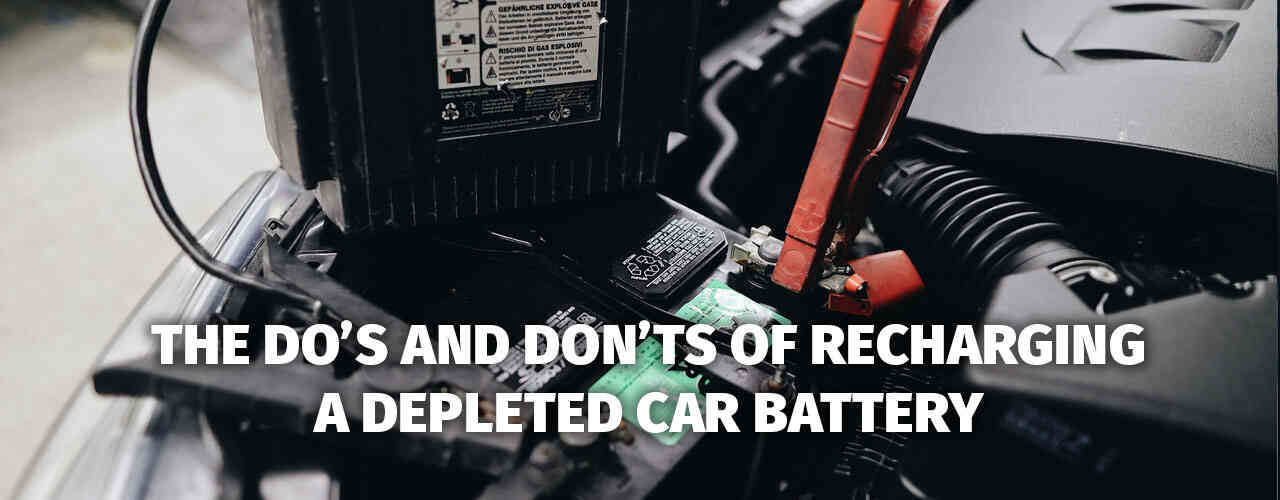In the hustle and bustle of modern life, it’s not uncommon to find oneself in a bit of a jam when the car battery decides to call it a day. The modern vehicle is, after all, a complex beast, reliant on this essential piece of kit to keep its many systems ticking over smoothly.
In this guide, we explore the do’s and don’ts of recharging a depleted car battery, an endeavour that, when executed correctly, can extend the life and efficiency of both your battery and your vehicle.
Understanding Your Battery
Before delving into the procedures of recharging, it's crucial to have a modicum of understanding about what sits under your bonnet. Car batteries are the lifeblood of modern vehicles, supplying the necessary juice to get the engine roaring to life, and keeping the myriad of electronic gadgets and systems functioning as intended.
Types of Car Batteries
There are primarily two types of car batteries; Lead-Acid batteries and Absorbent Glass Mat (AGM) batteries. Lead-Acid batteries are the traditional choice, known for their affordability and reliability. On the other hand, AGM batteries are the newer kids on the block, offering better longevity and ability to withstand frequent discharging and recharging cycles.
The Right Environment
Before you begin, it’s crucial to ensure that you are operating in a safe and well-ventilated environment. Car batteries can emit harmful gases; hence, a well-ventilated area will mitigate the risks associated with recharging a depleted battery.
Safety First
Before embarking on this task, ensure you have gloves and protective eyewear to shield yourself from any potential hazards. It's a small preparation step that can prevent unwanted accidents.
Inspecting the Battery
Before hooking up the charger, give your battery a good once-over. Look for any signs of damage or leakage. If you find any, it's best to replace the battery rather than attempting to recharge it.
Selecting the Right Charger
It’s imperative to choose a charger that matches the specifications of your battery. Utilise a smart charger which can adjust the amperage rate and monitor the charging process to prevent overcharging.
The Charging Process
- Disconnect the Battery: It's a safer practice to disconnect the battery from your vehicle before charging.
- Clean the Terminals: Use a mixture of baking soda and water to clean the battery terminals.
- Connect the Charger: Attach the red clamp to the positive terminal and the black clamp to the negative terminal.
- Set the Charger: Follow the instructions on your charger to set the correct amperage rate and charging voltage.
- Monitor the Charging: Keep an eye on the charging process to ensure it’s progressing as expected.
Maintaining Your Battery Post Charge
Post charging, ensure to maintain your battery to extend its lifespan. Regularly check the electrolyte levels and top up with distilled water as needed. Additionally, keep the terminals clean and free from corrosion, ensuring a solid connection.
Seek Professional Assistance if Unsure
Should you find yourself in over your head or unsure about any aspect of the charging process, do not hesitate to seek professional assistance. It’s always better to err on the side of caution to prevent any mishaps or further damage to your battery or vehicle.
Avoiding Common Mistakes
Many individuals fall prey to common mistakes which can be easily avoided with the right knowledge. For instance, ensure the battery is fully charged before reconnecting it to your vehicle to avoid any issues.
In conclusion, recharging a depleted car battery is a task that requires a careful approach. Following the steps outlined above can ensure the longevity and efficiency of your battery, thus ensuring your vehicle remains reliable on the road.




